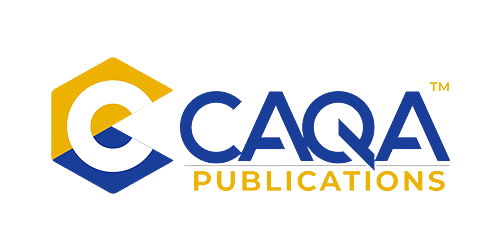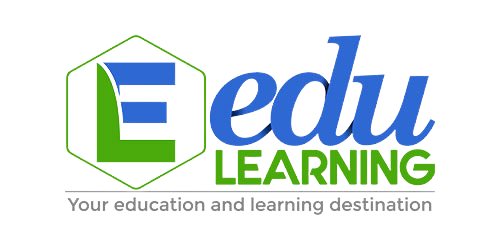Teacher AI is an intelligent and innovative technology that harnesses the power of artificial intelligence to revolutionise the way we learn and teach. With its advanced algorithms and machine learning capabilities, Teacher AI offers personalised guidance and support in various educational settings. Whether it's providing interactive lessons, adapting to individual learning styles, or even assisting in grading and assessment, Teacher AI is designed to enhance the educational experience and empower both students and teachers alike.
"Teacher AI" is a term that can refer to various applications of artificial intelligence (AI) in the field of education. It generally involves the use of AI technologies to support and enhance teaching and learning processes. Here are a few examples of what "Teacher AI" can encompass:
Intelligent Tutoring Systems: AI-powered systems that provide personalised and adaptive instruction to students. These systems analyse individual student performance, identify areas of weakness, and deliver targeted feedback and guidance.Virtual Assistants for Teachers: AI-based virtual assistants designed to help teachers with administrative tasks, lesson planning, grading, and other aspects of their work. These assistants can automate routine tasks, provide resources and suggestions, and offer personalised recommendations.
Adaptive Learning Platforms: AI platforms that adapt learning content and experiences to meet the individual needs of students. These systems use machine learning algorithms to analyse student data and tailor educational materials and activities accordingly.
Automated Essay Scoring: AI systems that assess and grade student essays using natural language processing techniques. These systems can analyse factors such as grammar, coherence, and content to provide feedback and evaluate student writing.
Intelligent Content Generation: AI tools that assist in creating educational content, such as generating quizzes, exercises, and interactive simulations. These tools leverage AI algorithms to generate or curate relevant and engaging materials for learners.
Student Engagement Analysis: AI systems that monitor and analyse student engagement and behavior during online learning. These tools can track factors like attentiveness, participation, and collaboration, providing insights to teachers to improve instructional strategies.
It's important to note that "Teacher AI" is a broad term, and the specific applications and technologies can vary based on the context and the goals of the educational institution or the developers creating these AI tools.
Teacher AI offers several benefits in the field of education. Here are some of the advantages of using AI technologies to support teachers and enhance the learning experience:
Personalised Learning: Teacher AI can provide personalised instruction and adaptive learning experiences to students. By analysing individual student data, AI systems can identify strengths, weaknesses, and learning styles to deliver customised content and feedback. This personalised approach helps students learn at their own pace and achieve better academic outcomes.
Efficient Administrative Tasks: AI-powered virtual assistants can assist teachers with administrative tasks, such as grading, lesson planning, and organising schedules. By automating routine and time-consuming activities, teachers can focus more on instructional activities and spend quality time with students.
Enhanced Teaching Strategies: Teacher AI can offer insights and recommendations to improve teaching strategies. By analysing student performance data, AI systems can identify patterns, trends, and areas where students are struggling. This information can help teachers modify their instructional approaches and provide targeted interventions to address specific learning needs.
Immediate Feedback and Assessment: AI technologies enable immediate feedback and assessment. For example, automated essay scoring systems can provide instant feedback on student writing assignments, allowing students to make revisions and improvements promptly. This timely feedback helps students track their progress and make adjustments in their learning.
Access to Educational Resources: AI tools can curate and recommend educational resources based on individual student needs. These resources can include interactive simulations, online courses, videos, and other multimedia materials. AI-powered platforms can help students explore a wide range of relevant content, enhancing their learning experience.
Student Engagement and Motivation: AI systems can monitor student engagement and behavior during online learning. By analysing factors like attentiveness, participation, and collaboration, AI tools can provide insights to teachers and suggest strategies to increase student engagement. This helps create a more interactive and motivating learning environment.
Continuous Learning and Support: Teacher AI can provide continuous learning and support beyond the classroom. Students can access AI-powered platforms and resources anytime, anywhere, enabling self-paced learning and ongoing educational support even outside of school hours.
While Teacher AI offers many benefits, it's important to remember that AI should complement and support teachers, not replace them. Human interaction, empathy, and the expertise of teachers remain vital in the educational process.
While Teacher AI brings numerous benefits to education, it also has certain limitations that need to be considered. Here are some of the limitations of Teacher AI:
Lack of Human Interaction: AI technologies cannot fully replicate the human-to-human interaction that is crucial for effective teaching and learning. The emotional and social aspects of education, such as building relationships, understanding nuances, and providing personalised support, are challenging for AI systems to emulate.
Bias in Data and Algorithms: AI systems are trained on existing data, which can contain biases and inequalities. If not properly addressed, these biases can be perpetuated in AI tools used in education. Biased algorithms can result in unfair treatment, unequal opportunities, and reinforce existing inequalities among students.
Limited Contextual Understanding: AI systems often struggle with understanding contextual nuances and complex concepts that may require deep contextual knowledge or critical thinking. They may not be able to interpret student responses or provide meaningful feedback beyond predefined parameters.
Privacy and Data Security: AI applications in education require collecting and analysing vast amounts of student data. This raises concerns about data privacy and security. Ensuring the responsible use and protection of sensitive student information is essential to maintain trust and protect student privacy rights.
Technological Dependence and Accessibility: Implementing Teacher AI requires reliable access to technology and internet connectivity, which may not be accessible to all students or schools, particularly in underprivileged areas. Relying heavily on AI systems also creates a dependence on technology that may be disrupted in case of technical failures or system outages.
Ethical Considerations: The use of AI in education raises ethical considerations, such as the transparency of algorithms, consent for data usage, and the responsible deployment of AI tools. It is important to address these ethical concerns and ensure that AI systems are designed and used in a responsible, transparent, and ethical manner.
Teacher Training and Support: The successful integration of AI technologies in education requires proper teacher training and support. Teachers need to understand how to effectively utilise AI tools, interpret the data generated, and complement AI with their instructional expertise. Adequate training and ongoing professional development are essential to maximise the benefits of Teacher AI.
It is crucial to consider these limitations and address them thoughtfully when implementing Teacher AI to ensure that it aligns with educational goals, respects student privacy, mitigates biases, and enhances the overall learning experience.


































